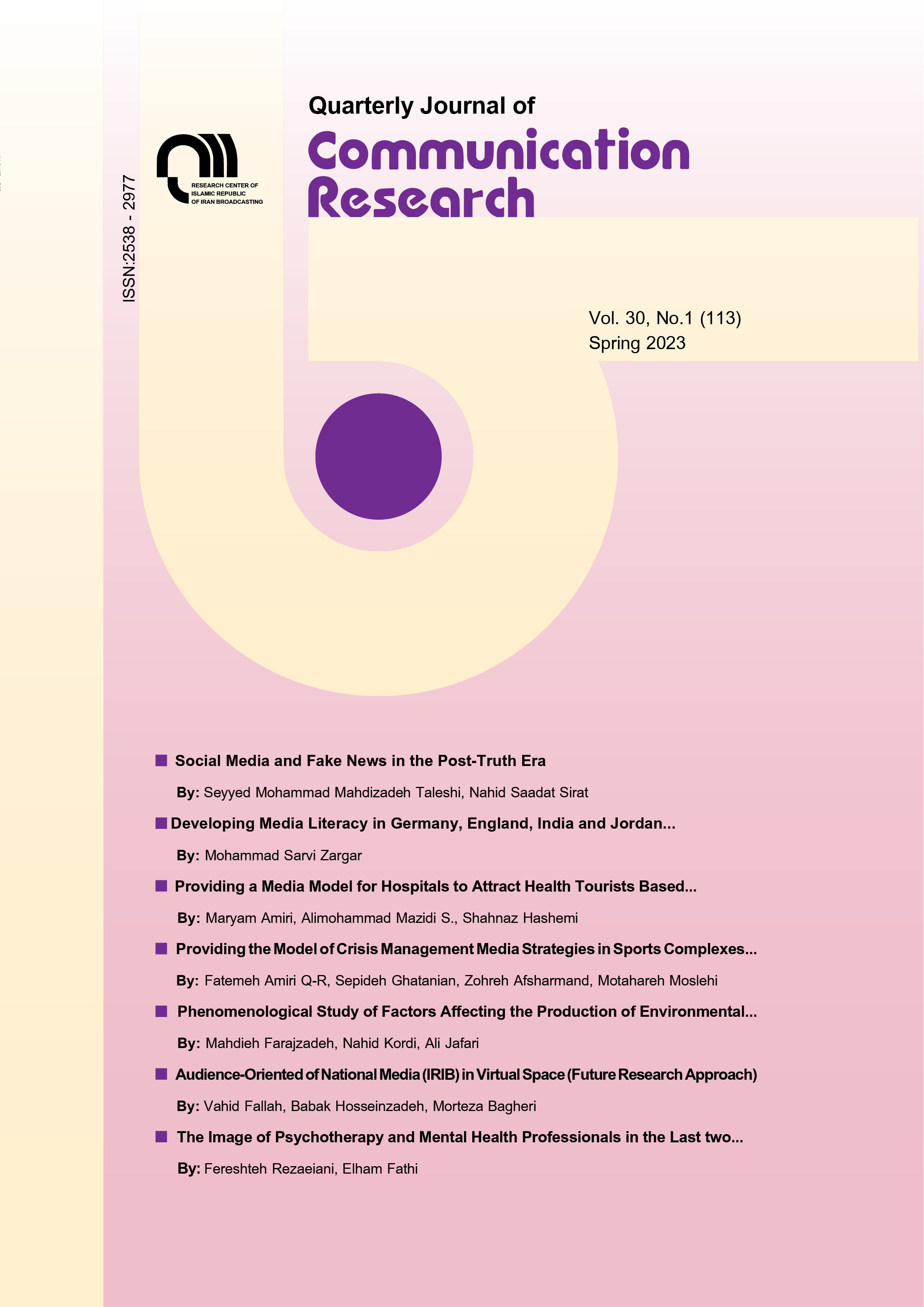Document Type : Original Article
Authors
1 Associate Prof. In Communication Sciences, Allameh Tabatabai University, Tehran, Iran
2 Communication Sciences
Abstract
The purpose of the research is to identify the components of fake news on social media in Iran. Identifying fake news and misinformation on social media which causes a kind of semantic entanglement is important. In this qualitative research, data were collected in the field with semi-structured interviews. The statistic population consisted of experts and experts in the field of social communication, media and news, and the sampling method was purposeful, which is non-probability. to reach theoretical saturation 29 interviews were conducted and the data were analyzed using MAXQDA 10 software. With the method of theme analysis, 4 main themes and 36 organized themes along with basic themes were identified as propositions raised in the interviews. The most important organized themes were: in the difference between fake news and real information: the extent of news coverage, lack of constructive effect, being biased, simulated, creating psychological warfare and credibility of the source, in the similarity of fake news with real information: similar effectiveness, news value, style news and time stability, in the goals of spreading fake news: creating a social movement, deceiving the public mind, media tension, directing public opinion, hybrid atmosphere and spreading ambiguity, and in the consequences of consuming fake news: creating a sense of pessimism, discrediting government institutions, credibility Searching for celebrities, eliminating managerial elites, suggestibility, social desperation and hasty decision-making.
Keywords
Main Subjects

